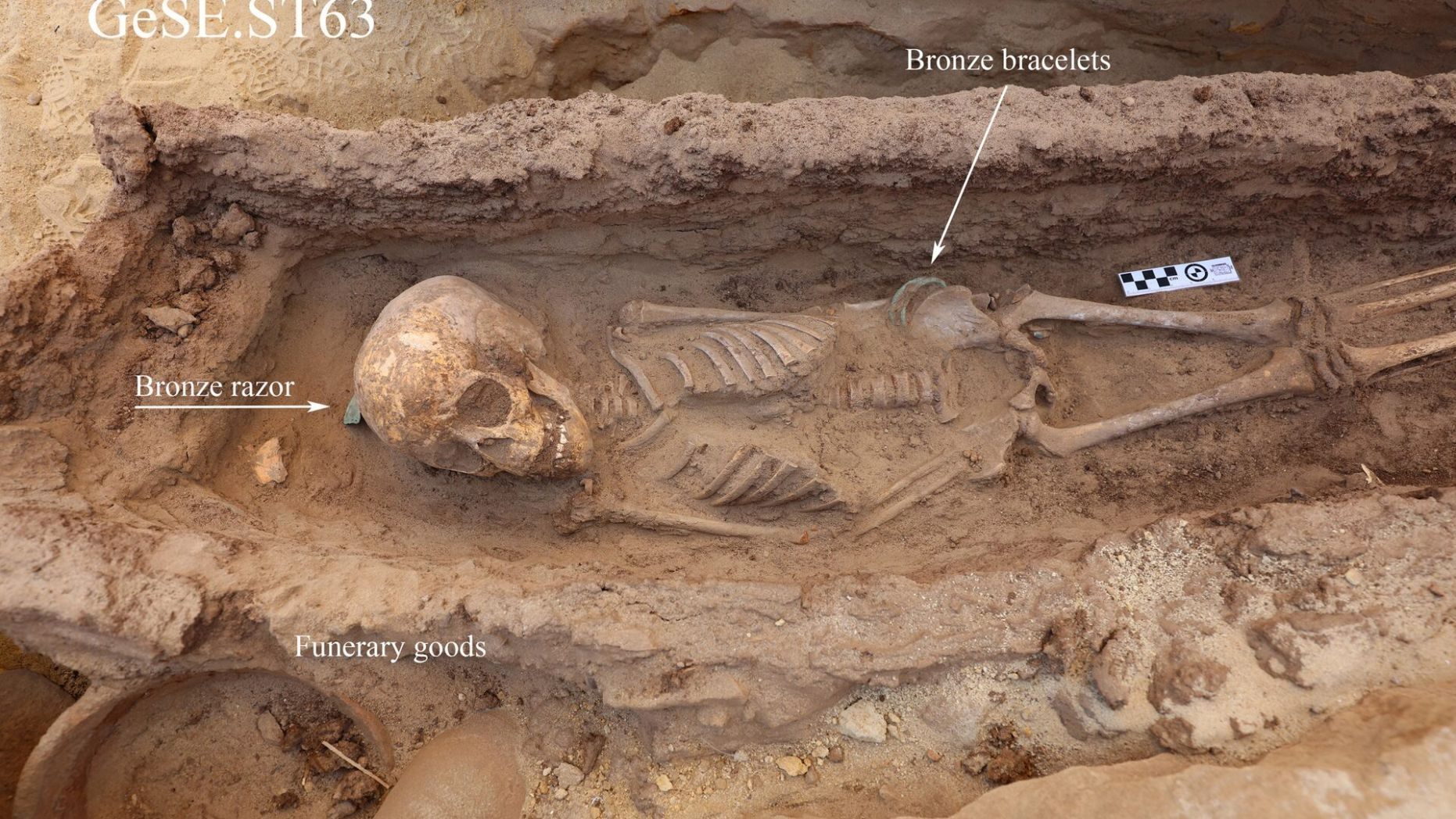Archaeologists discover child graves at ancient site in Egypt

Archaeologists have uncovered the graves of four children at an ancient site in Egypt.
A Swedish-Egyptian team working at the Gebel el Silsila site uncovered four child burials dating back to the Thutmosid period more than 3,000 years ago. The discoveries, which were announced recently, were made earlier this year.
In a Facebook post, Dr. Mostafa Waziri, secretary general of Egypt’s Supreme Council of Antiquities explained that the remains of a child aged between two and three years old was found in a rock-hewn grave at the site. The mummy, he explained, still retains its linen wrapping and is surrounded by “some organic material” from the remains of a wooden coffin.
TROVE OF STATUES DEPICTING LIONESS GODDESS DISCOVERED IN EGYPT
The remains of a child aged between six and nine years old were also found inside a wooden coffin, while another grave contained the remains of a child aged between five and eight. Both children were buried with “funerary furniture,” according to Waziri, including amulets and a set of pottery.
The archaeologists will conduct more research on the burials, Waziri wrote.
“The fourth burial is for a child between the ages of five and eight years too, and it is not clear exactly the cause of his death,” he added.
Archaeologists are particularly intrigued by the graves containing funerary items, known as ST63 and ST64. “The child burials ST63-64 are the first of their kind found at Gebel el Silsila, in the fact that both were preserved with complete funerary goods,” explained Dr. Maria Nilsson and John Ward, director and assistant director, respectively of the Gebel el Silsila project. “It allows an insight into both material culture as well as funerary customs and religious beliefs, but even more so provides us with socio-political information and the social status of those entombed.”
ANCIENT ROMAN SHIPWRECKS, STUNNING ARTIFACTS, DISCOVERED NEAR EGYPTIAN PORT
Nilson and Ward, who both work in the Department of Archaeology and Ancient History at Lund University in Sweden, said that the graves let archaeologists study completely preserved burials. While this can provide insight into the general health of those buried, it can also shed light on other aspects of their lives. At Gebel el Silsila, there’s “a strong indication of the existence and activity of complete families on site, supporting the team’s previous hypothesis of a well-functioning society on site in contrast with only quarry activities,” explained Nilsson and Ward.
The discovery also brings the archaeologists closer to finding the ancient village of Kheny, as Gebel el Silsila was known in ancient times.
Since they began excavating the site in 2015, the Swedish-led team has found a total of 69 tombs at Gebel el Silsila, almost 30 of which have been excavated. With the exception of two infant burials from an earlier excavation and the four graves found this year, archaeologists found that all the excavated tombs were plundered in antiquity.



 Creators of mankind
Creators of mankind Description of “Tall white aliens”
Description of “Tall white aliens” Where they came from?
Where they came from? About hostile civilizations
About hostile civilizations The war for the Earth
The war for the Earth “Tall white aliens” about eternal life
“Tall white aliens” about eternal life Video: “Nordic aliens”
Video: “Nordic aliens” Aliens
Aliens Alien encounters
Alien encounters The aliens base
The aliens base UFO
UFO Technology UFO
Technology UFO Underground civilization
Underground civilization Ancient alien artifacts
Ancient alien artifacts Military and UFO
Military and UFO Mysteries and hypotheses
Mysteries and hypotheses Scientific facts
Scientific facts


















